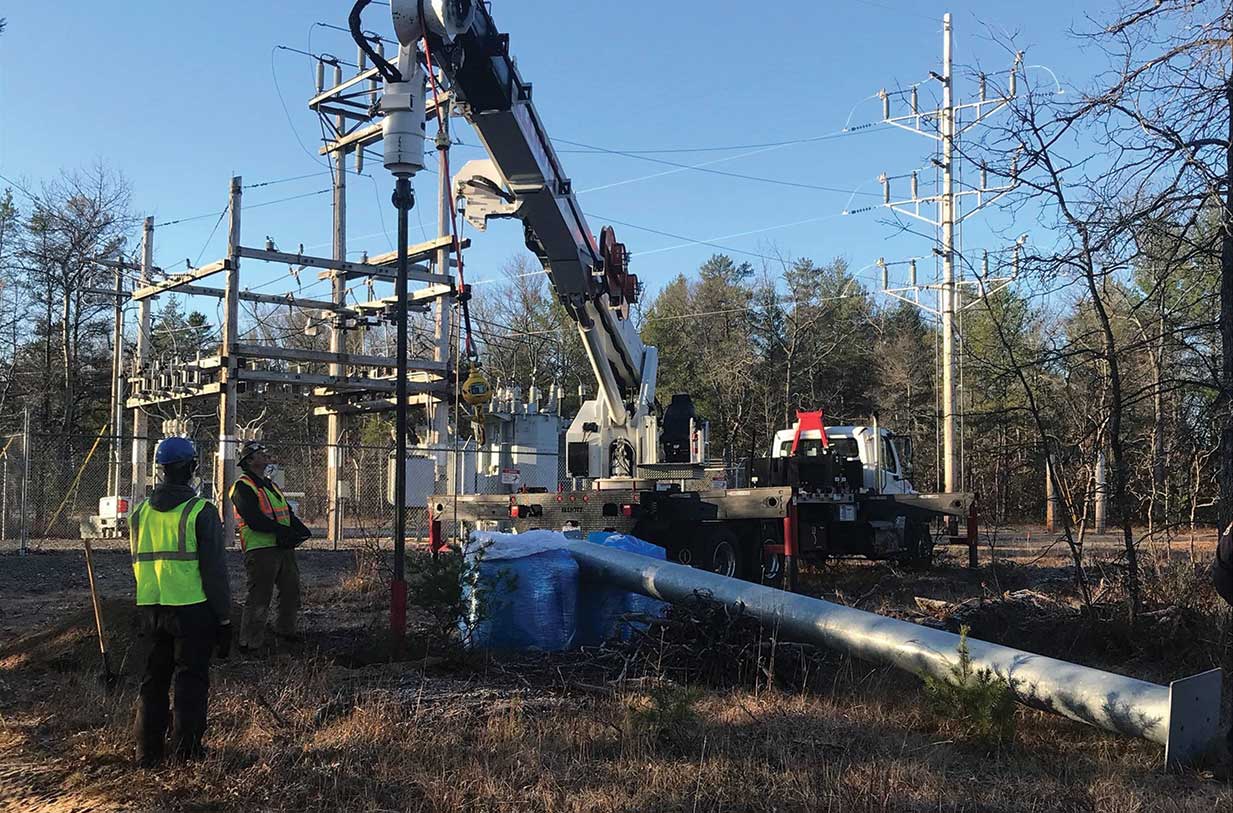PIE&G’s Advanced Metering Infrastructure (AMI) system is the latest technology available to utilities to improve the level of customer service, reliability, and outage response. An AMI system is comprised of two main components: the meters/modules, and the communications infrastructure and software system. AMI meters measure energy use and quality, and transmit that information to collector equipment mounted on our poles and towers.
The co-op is working with Vision Metering to ensure that the meters are manufactured to state-of-the-art specifications. Field testing of meters in a pilot program has been underway to ensure that all components of the communications and metering infrastructure comply with strict industry standards and meet PIE&G’s needs. The data is encrypted and consists of interval usage, power quality measurements, load monitoring, and outage information. This information will be used for billing, system integrity, and planning and maintenance purposes. The information also alerts PIE&G to the location and number of power outages. This will improve response time and help with the efficient allocation of resources as power is restored.
Once the collectors receive the encrypted data, the data is securely communicated to PIE&G’s office. Our software engineering partners have been testing the data to ensure its security and that it is in a format that PIE&G can utilize for billing (meter readings and dates), load monitoring (circuits that may be peaking), outage management, and power quality measurements (to observe which circuits are performing to standards or if maintenance may be needed for improvement).
PIE&G is also working to build its communications infrastructure. AMI data transmission is improved when the collectors are placed on tall poles and/or towers. The taller height improves the quality and reliability of communications. The collectors will be located above obstacles such as buildings, objects, and trees that may interfere with or block the transmission path of signals. PIE&G’s infrastructure will be comprised of 100-foot poles (custom-manufactured for PIE&G by Moran Iron Works) and several area 400-foot telecommunications towers (upon which PIE&G will mount its equipment). Our team is currently evaluating additional sites to determine strategic areas in our service territory in which to place more of our 100-foot poles to optimize our communications network.
Stay tuned for more information as the project continues in the coming months.
Quick Facts on Advanced Meters
- You won’t have to “read the meter”
- Can help save money and energy
- Online access to electric history
- Faster outage response
- Shorter outage times
- Accurate billing/no estimated bills
AMI Update
Full deployment of PIE&G’s Advanced Metering Infrastructure (AMI) project began in May 2021. The meter exchanges are being performed by PIE&G employees and by Advanced Meter Services, a contractor working on behalf of the cooperative.
The cooperative started a pilot phase in Presque Isle and Cheboygan counties. Once that pilot phase has been tested, the full AMI implementation project will continue.
Cooperative members can expect to receive a postcard notifying them of their upcoming meter exchange. If you’re not home, a door hanger will be left where a meter installation has taken place.
The impact of the installation is minimal. Co-op members can expect to lose power for a few minutes during the exchange. In addition, the next bill will show two meter readings: one from the old meter and one from the new meter. Members will be able to identify old and new readings by the meter numbers included on their bill. Until the system is fully operational, members who receive monthly billings should continue to report their meter readings by their due date each month. PIE&G will remove the meter reading boxes on billing stubs when members no longer need to report readings.
The upgraded system will lower the cost related to manual meter reading, which will contribute significantly to the financial return on the project. The new system will also reduce the cooperative’s carbon footprint by reducing the number of employees traveling in response to meter issues.
Other benefits from the meters include automated detection of outages, more accurate information about the outages and restoration times, detailed information about energy use, better detection of power theft, and support and expansion of future billing options.
Members can find more information at pieg.com/electric-meter-information.






